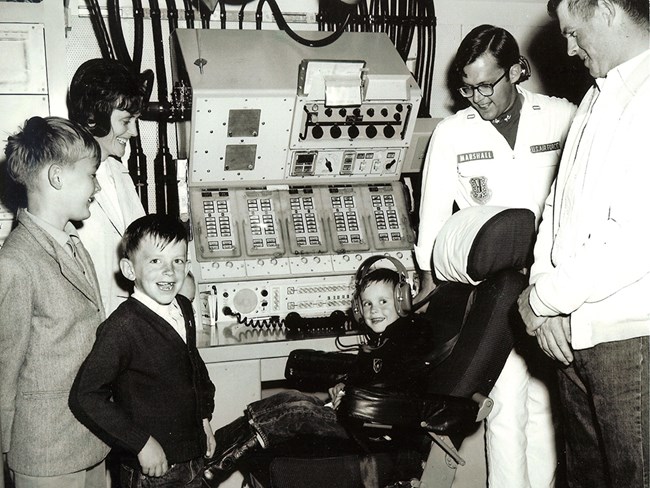Part of a series of articles titled Minuteman Missiles and the Nuclear Arms Race.
Previous: A Silo A Day
Article

NPS/MIMI 2617
While the Ellsworth AFB sites were under construction, the Air Force was building several other Minuteman installations. By the end of 1967, the Nation had 1,000 Minuteman missiles on alert in six separate deployment areas located throughout the north-central United States. In addition to the original installations at Malmstrom AFB and Ellsworth AFB, Minuteman complexes were deployed at Minot AFB and Grand Forks AFB in North Dakota, Whiteman AFB in Missouri, and F.E. Warren AFB in Wyoming. In addition, another squadron was established at Malmstrom AFB. At each installation the Air Force continued to improve and refine the Minuteman operational system.
Newly-elected President John F. Kennedy instigated one of the first significant improvements to the Minuteman weapon system. Soon after taking office in 1961, Kennedy learned that even if he ordered a massive nuclear retaliation to a Soviet attack, a portion of the Soviet's long-range nuclear force would survive to strike again. As a consequence, the Kennedy administration quickly abandoned the strategic policy of releasing America's entire nuclear arsenal in "one horrific spasm." Instead of massive retaliation, Secretary of Defense Robert McNamara recommended a "flexible response." Should deterrence fail, McNamara proposed that America's nuclear weapons be deployed selectively. The first ICBMs would target enemy bombers and missile sites. The remaining ICBMs would be held in reserve, for potential use against Soviet cities. McNamara hoped that the threat to the civilian population would persuade the Soviet Union to end the conflict. McNamara began retooling America's nuclear forces, including Minuteman, to reflect the new military strategy.
However, Colonel Edward Hall and his engineers designed Minuteman to be a fast-reacting, mass-attack weapon. Upon receiving the launch command, the officers at each Minuteman facility had to fire all ten missiles under their control. A selective launch of fewer than ten missiles was impossible. In order to conform with the new defense strategy, Air Force engineers had to redesign Minuteman's launch control complex. Historian Clyde Littlefield described the changes:
In order to conform to the new concept, engineering changes had to be made to allow a combat crew in a control center to switch targets and to fire one or more missiles selectively, conserving the remainder for later use.... Greater flexibility in targeting and firing required a significant extension to the limited survival time [of each operational site]. The [original] Minuteman facility design did not provide for the protection of the power supply. . . . At a control center, power generators were above the ground . . .. When and if these generators stopped functioning, the operational potential of the system would be reduced to only six hours. Revised strategic concepts required that the weapon survive at least nine weeks after an initial enemy attack.
To meet this requirement, the Air Force put the generators in underground capsules next to each launch control center. Although the Air Force considered incorporating these generators into the Minuteman facilities at Ellsworth AFB, construction was already underway there, making the changes impractical. Consequently, the generator capsules began with the third Minuteman deployment area at Minot AFB in North Dakota.
Part of a series of articles titled Minuteman Missiles and the Nuclear Arms Race.
Previous: A Silo A Day
Last updated: October 20, 2020